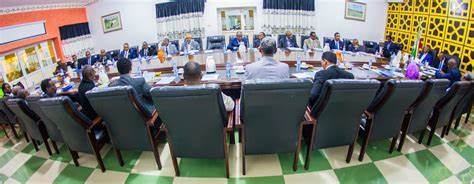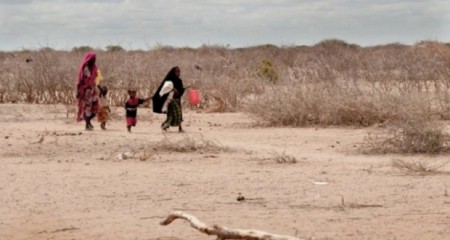Preliminary reports and incessant calls from pastoralist nomads, regional and districts officials of Eastern regions of Somaliland corroborate the onset of a severe, life-threatening drought.
Heeding those calls, the council of ministers of the Republic of Somaliland, on its last 71st meeting, Thursday, reinstated the old National Disaster Committee conferring it with its 2015 mandate again without changing its composition. The council, chaired by the President, Musa Bihi Abdi, took note of the devastation another purging drought would have on both human and livestock populations emerging from a three-year-long acute drought that lasted from 2015 to early 2017. Livestock was decimated to almost half of its herd sizes, leaving some families with nothing to keep them in the countryside anymore.
The council, chaired by the President, Musa Bihi Abdi, took note of the devastation another purging drought would have on both human and livestock populations emerging from a three-year-long acute drought that lasted from 2015 to early 2017. Livestock was decimated to almost half of its herd sizes, leaving some families with nothing to keep them in the countryside anymore.
Since then, attempts to restock herds have met with some success. But the threat of another one, according to the reports, can have a more lasting impact since stocks are not even close to their pre-2015 sizes.
Faisal Ali Sheikh, Director of the National Disaster Preparedness and Food Reserve Authority, stated the plight which the developing drought imposes on livestock herders and semi-sedentary populations depending on them is unfathomable.
“Teams that have reported back from Somaliland regions most impacted by an impending drought are already alarming. Water availability has dwindled to nothing in many areas. Grazing has long gone. Food and fodder security has dissipated for both human and livestock populations,” he said in an interview he granted the Somaliland National News Agency (SOLNA) Saturday.
He said families are travelling to distant areas such as Eastern Ethiopia to save what is left of their stocks.
Faisal stated that Nugal, Hudun and Taleh have been severely affected in the Sool and Haysamo regions where most of Togdheer region’s southern and eastern parts have been hit as were Garadag, El Afweyn, Fiqifuliye and Badhan areas of Sanaag have been.
He said some 55 000 families were direly impacted so far.
Relief efforts have begun in most of those areas and some in the Marodijeh region of the capital such as areas in and around Sabowanaag, Adadley, Salahley, and Balligubadle.
The government of Somaliland, cognizant of the recurring, debilitating effects of the droughts, announced that it will plan for the building of more rainwater catchments, dig more boreholes and enforce pasture reserve areas for such eventualities.




























